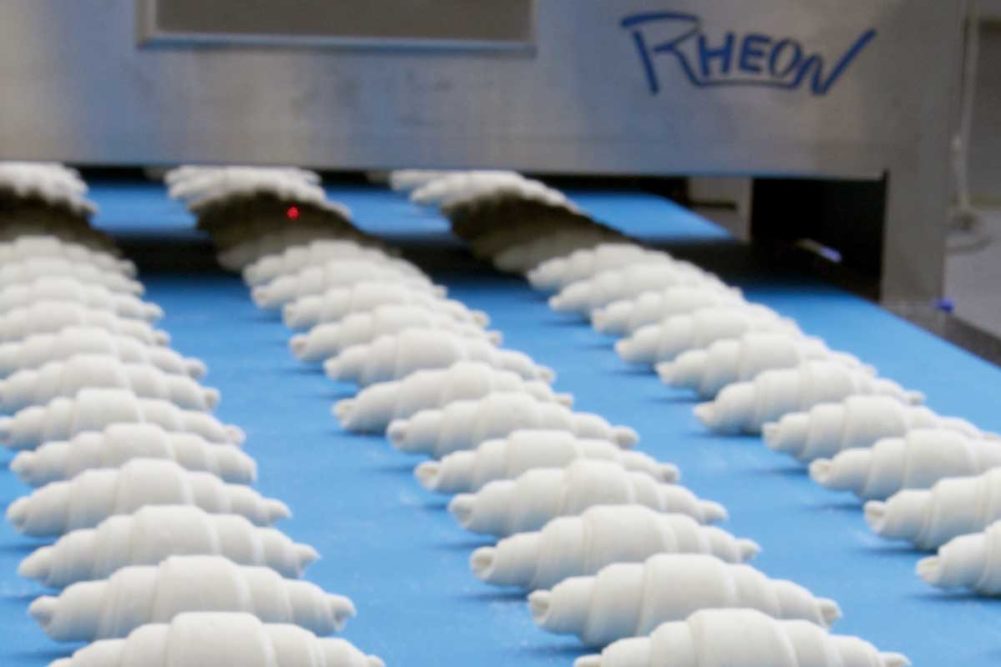Baking may be a labor of love, but bakers aren’t loving it when it comes to today’s labor shortage. It’s not only about having enough people to get the job done, but it’s also about doing the job right.
That’s why so many bakers are turning to automation or upgrading their current systems to assist with a plethora of potentially problematic issues ranging from ensuring product quality and food safety to meeting the growing demand for baked goods.
“It is important to have reliability and consistency in your equipment,” said John Giacoio, vice president of sales, Rheon USA. “Hiring people has never been so challenging as it is now. We have been able to provide centralized controls and line operation from a tablet. The ability to monitor a bakery’s line with limited staff helps to reduce the need for skilled labor to run the line.”
No silver bullet will make the problem go away, but bakers can take steps to manage the workforce dilemma.
“You have to create a working environment that satisfies key areas such as maintenance, sanitation, operator friendliness,” noted Nick Magistrelli, vice president of sales, Rademaker USA. “The evolution of the Rademaker design has been focused on this for the last few years.”
Despite the length and complexity of a bakery’s sheeting and laminating lines, which can extend up to 200 feet or more, production requires relatively few people.
While hand-forming and shaping of elaborate pastries may require more than a handful of skilled operators to twist, turn and tie dough pieces into artistic masterpieces, advances in technology are steadily tackling tasks that seemed impossible to automate a decade ago.
Moreover, today’s systems simplify upkeep with the latest in sanitary design.
Bakers aren’t working with a blank sheet of paper when it comes to solving the workplace conundrum.
“Hygienic design and cleaning without tools are key benefits for users of AMF Tromp sheeting and laminating lines,” said Hans Besems, executive product manager, AMF Tromp, an AMF Bakery Systems brand. “Labor will continue to become a scarcity in the coming decade. But because of automation of processes in sheeting lines, fewer operators are needed for running them successfully.”
Integrating operator friendliness is one way for bakeries to address their skilled labor shortage. Sometimes it’s as easy as making digital controls or an HMI more human than machine-oriented.
That requires these devices to “think” like a baker instead of like an IT technician or the engineer who designed the production line.
“There was a time where an HMI would be prepared with these really challenging settings where operators would have to provide very detailed adjustments to make a simple line change, like an increase in speed or the opening of a gap on a gauging station,” Mr. Magistrelli recalled. “We were trying to do right by the client by giving them all the flexibility in the world to manage the line. It’s not so much a specific percentage on the overall line speed but designing a control feature that simplifies how to run equipment from an operator’s perspective.”
Better digital tools dovetail nicely into effectively managing a wholesale bakery.
“Reliability, uptime, productivity, overall equipment efficiency (OEE) and output are the magic words for any plant manager in the bakery industry,” Mr. Besems said. “Our automated lines and systems take away these uncertainties and promise productivity and throughput without the need for a large team of operators. Even quality control, individual product checks, efficiency checks and preventive maintenance are new products based on data of the production lines.”
Alexander Weissbach, head of technology, product management and the Dough-how Center at Rondo, pointed out how digital automation can regulate a laminating line.
“Digital controls can compensate for variations in the dough to ensure a regular dough flow as well as reduce the number of needed operators,” he said. “Bakers can use intuitive control systems to learn quickly the way to handle the laminating line.”
On semi-automated bakeries, he added, such controls will reduce hand wheels and other manual settings.
“If all parameters for a dedicated product are saved in the PLC, production startup and changeovers are faster and easier to execute,” Mr. Weissbach said.
Meanwhile, the Fritsch operating system (FOS) is a self-learning tool that drives production efficiency and provides preventive maintenance, noted Randy Kelly, applications specialist for Fritsch, a Multivac Group company.
With the performance-based control panel, numerous parameters are set into the default program to adjust components on the laminator. Only a few, such as the rolling gap and number of laminated dough layers, need to be readjusted to achieve the desired result.
“To further simplify operation, the programs for producing dough bands are predefined for specific products,” he explained. “This means that when a new recipe is created, not all parameters have to be set again.”
The FOS software also validates the line’s capabilities to create new products.
“The drives coordinate with each other in terms of their performance and, if necessary, regulate to that of the smallest drive,” Mr. Kelly observed. “This ensures the highest and most consistent product quality.”
This article is an excerpt from the April 2022 issue of Baking & Snack. To read the entire feature on Sheeting & Laminating, click here.






